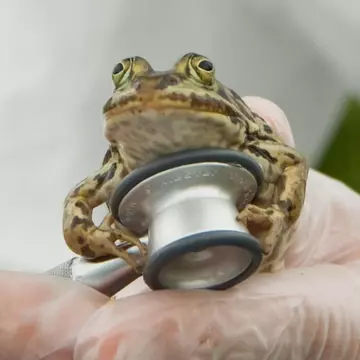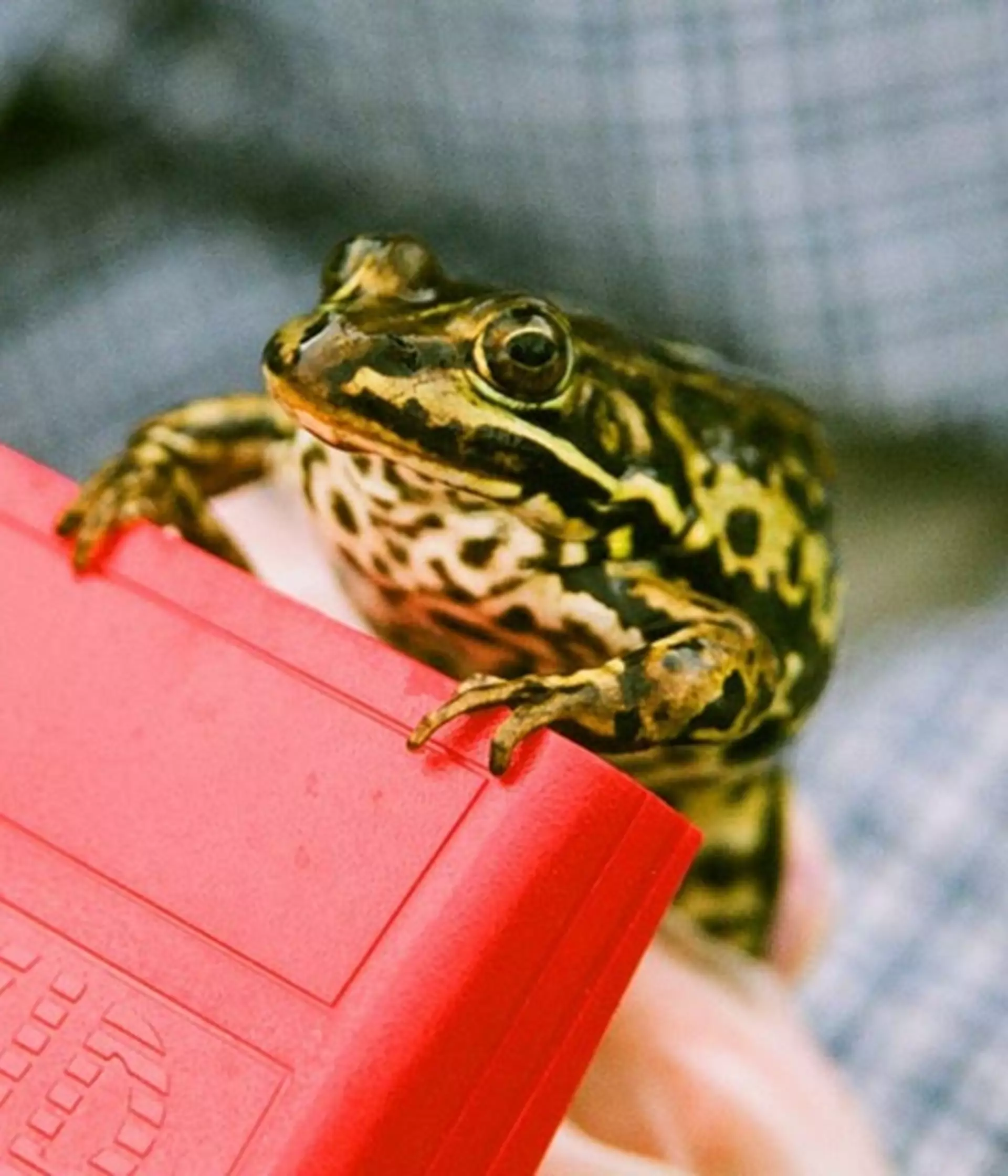
Dr Tony Sainsbury
Senior Lecturer Wild Animal Health
Dr Tammy Shadbolt
Wildlife Veterinarian & Post-Doctoral Research Assistant
Georgina Gerard
DRAHS Project Manager
The pool frog is currently extinct in Britain.
Historically, the pool frog was present in Britain, but following loss and damage to their Fenland and Breckland habitats the species went extinct and the last native population of pool frogs, in Norfolk, was lost.
A reintroduction project was devised by Natural England and ARC to bring the pool frog back to its last known home county. Genetics revealed that English pool frogs were closely related to Scandinavian frogs. From 2005 to 2008, pool frogs were imported from Sweden and carefully released at an undisclosed location in Norfolk, where their habitat had been specially enhanced.
Following the establishment of a viable population at the first site, from 2015 onwards, spawn from this site was head-started. The metamorphs were released at Thompson Common to establish a second population to help ensure the viability of this species in the long term.
Why we are there
The DRAHS project at ZSL’s Institute of Zoology (IoZ) is closely involved in the pool frog reintroduction programme. It conducted a detailed Disease Risk Analysis (DRA) in 2003/05, and has since been involved in disease risk management and post-release health surveillance. The recovery programme is implemented by the Amphibian and Reptile Conservation Trust (ARC), with support from Natural England.
Staff provide advice on ensuring biosecurity protocols are put in place during head-starting, carry out clinical examinations on both pool frogs and native amphibians at the two release sites, and perform post-mortem examinations on any amphibians found dead at the release sites or during head-starting. Our scientific outputs provide information on the disease risk analysis undertaken for the translocations and provide an insight into how other amphibian translocations can be carried out with best-practice disease risk management in place.
The scientific evidence from our research not only informs the pool frog recovery programme but also provides a globally relevant insight into which hazards are the highest risk to amphibian (conservation) translocations and how to mitigate these risks.

Impact
- A viable pool frog population in the long term through translocations, with no impact on the health of native amphibians at the release sites.
- A species recovery programme carried out with best-practice disease risk management and post-release health surveillance.
Pool frog (Pelophylax lessonae)
The pool frog is one of only two native frogs in Britain. The pool frog has full protection under UK law, including The Wildlife and Countryside Act 1981 and the Conservation of Habitats and Species Regulations 2017. It is an offence to kill, injure, capture or disturb them, and to damage or destroy pool frog breeding or resting habitat. It is also illegal to sell or trade pool frogs. Internationally it is listed on Appendix III of the Bern Convention and on Annex IV of the EU Natural Habitats Directive. The IUCN Red List status is 'Least Concern'.
Key Species
Pool frog (Pelopylax lessonae)
People Involved
Dr Christopher Michaels
Partners & Sponsors
Partners: Amphibian and Reptile Conservation Trust, Natural England
